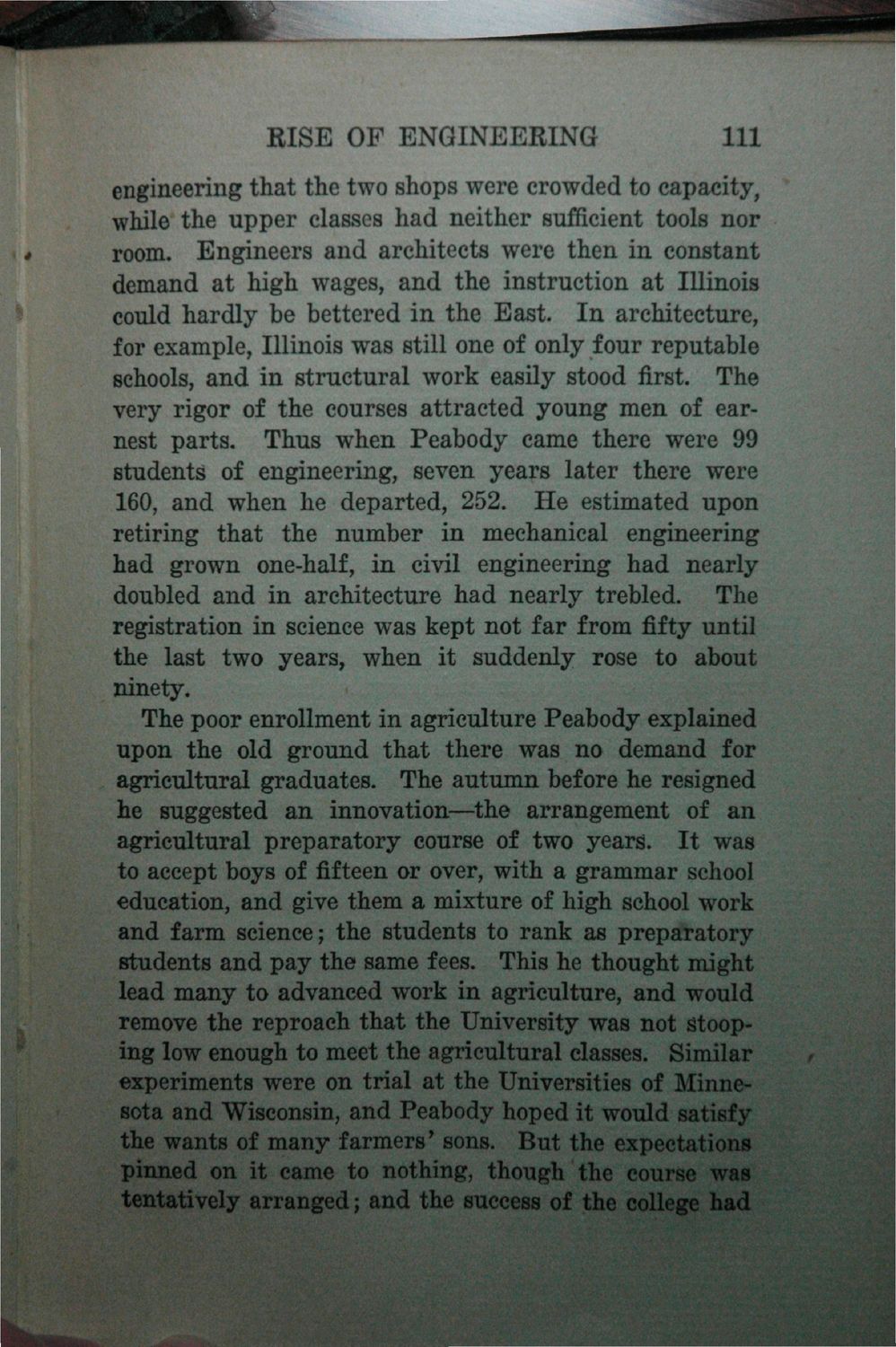| |
| |
Caption: Book - History of the University (Nevins)
This is a reduced-resolution page image for fast online browsing.

EXTRACTED TEXT FROM PAGE:
RISE OF ENGINEERING 111 engineering that the two shops were crowded to capacity, while'the upper classes had neither sufficient tools nor room. Engineers and architects were then in constant demand at high wages, and the instruction at Illinois could hardly be bettered in the East. In architecture, for example, Illinois was still one of only four reputable schools, and in structural work easily stood first. The very rigor of the courses attracted young men of earnest parts. Thus when Peabody came there were 99 students of engineering, seven years later there were 160, and when he departed, 252. He estimated upon retiring that the number in mechanical engineering had grown one-half, in civil engineering had nearly doubled and in architecture had nearly trebled. The registration in science was kept not far from fifty until the last two years, when it suddenly rose to about ninety. The poor enrollment in agriculture Peabody explained upon the old ground that there was no demand for agricultural graduates. The autumn before he resigned he suggested an innovation—the arrangement of an agricultural preparatory course of two years. It was to accept boys of fifteen or over, with a grammar school education, and give them a mixture of high school work and farm science; the students to rank as preparatory students and pay the same fees. This he thought might lead many to advanced work in agriculture, and would remove the reproach that the University was not Stooping low enough to meet the agricultural classes. Similar experiments were on trial at the Universities of Minnesota and Wisconsin, and Peabody hoped it would satisfy the wants of many farmers' sons. But the expectations pinned on it came to nothing, though the course was tentatively arranged; and the success of the college had
| |